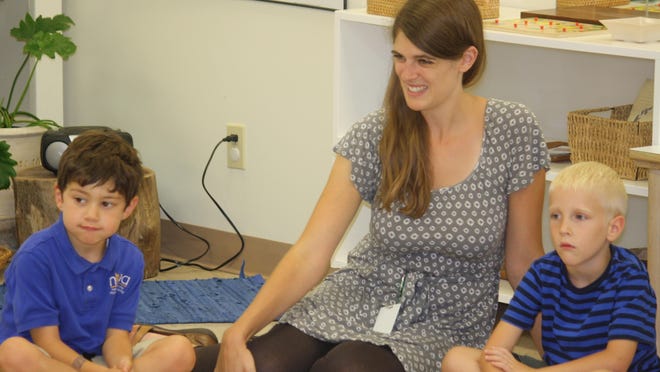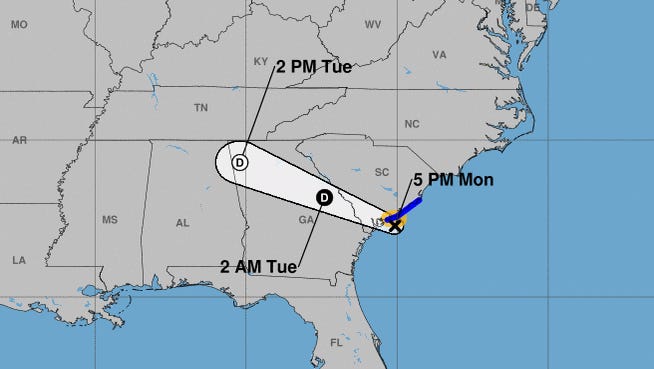
- A first-of-its-kind survey measures a potential antidote to the pandemic malaise enveloping many Americans: Vitality.
- The survey found 18% of U.S. adults had high vitality, meaning they were healthier, more likely to exercise and less likely to be obese.
- Experts believe it's important to track vitality's role as the nation emerges from the coronavirus pandemic.
Cynthia Vitone volunteered at a theater near her hometown in Shelton, Connecticut. It was work that gave her purpose and social interaction – until the coronavirus shut down performances.
Even though the pulse of daily life at work and home has returned to normal since the lockdowns of 2020, Vitone still feels a void and is scouting for other volunteer opportunities.
“It made me feel great to be with people, meeting people and having fun,” Vitone said. "I haven’t made myself find something else like that. Now I am thinking, why haven’t I done that?"
Vitone’s self-assessment comes after she participated in a first-of-its-kind survey measuring a potential antidote to the pandemic malaise enveloping many Americans. New research from CIGNA and Morning Consult attempts to measure vitality and how it influences overall health and productivity.
The survey of more than 10,000 U.S. adults found 18% had high vitality. Those individuals were healthier, more likely to exercise, less likely to be obese and more likely to have a primary-care doctor.
The 15% of adults with low vitality had poorer diets, less sleep and more chronic medical conditions. They also are more likely to be socially isolated, obese, depressed or anxious.
Feel the urge to 'quiet quit'?Time to check in with your mental health, experts say
Psychologist Richard Ryan, who has studied vitality and human motivation and helped develop the survey, believes it's an important way to track vitality's role in the population as the nation emerges from the coronavirus pandemic. Communities and employers might learn how to help people thrive.
"You can have a big impact if you focus on this particular variable because it's so indicative of overall wellness," Ryan said. "Then we can really identify routes to improve vitality."
CIGNA, which has supported past research on the loneliness epidemic, has pledged to track vitality over the coming years through the Evernorth Vitality Index.
CIGNA officials said vitality values, promotes and prioritizes good health while also treating sickness and disease. Helping people stay healthy can help employers and communities lower health spending but also guide people to healthier and more productive lives.
“Harnessing the power of our individual vitality is critical to our collective future," said Cigna Chairman and CEO David Cordani. "The past few years clearly illustrated that health is multi-dimensional and we need a more comprehensive measurement tool – one that can assess how we are showing up at work, at home and in our communities."
Surgeon general targets workplace mental health
The survey comes as studies show the U.S. workforce is grappling with burnout, mental health and fatigue.
U.S. Surgeon General Dr. Vivek Murthy in July issued an advisory on crisis levels of burnout among doctors, nurses, community and public health workers. He warned COVID-19's demands put health care workers and their families at risk of harm and pushed many "past their breaking point."
Mental health challenges have extended beyond health care workers. Many Americans have struggled with work-life balance with some engaged in "quiet quitting," or giving minimum effort on the job.
Last week, Murthy unveiled a strategy for the broader workforce. His office cited research that revealed 76% of U.S. workers reported at least one symptom of a mental health condition and 84% blamed workplace conditions as contributing to at least one mental health challenge.
Murthy unveiled a five-point plan to encourage companies to focus on their employees and establish workplaces as “engines for mental health and well-being.”
“It will be worth it because the benefits will accrue for workers and organizations alike,” Murthy said.
CIGNA's research, however, suggests that overall wellbeing extends beyond a person's employment. While people who earn more and have higher education levels are more likely to thrive, researchers also identified lower-wage earners with enviable marks on physical and mental health and strong social circles.
Lower income adults who achieve high vitality scores did better than their wealthier counterparts on measures of choice and freedom, prioritized health and had stronger social ties. They are also less likely to say their personal life suffers because of work, the survey said.
Dr. David Brailer, CIGNA's chief health officer, said the such results give reason for optimism about how social ties influence a person's outlook.
"What you hear today is there's a lot of churn, people are very distressed about the situation with their jobs," Brailer said. "There's something else going on because people are feeling great about themselves. So much of this is how you feel connected to your social sphere."
'More loneliness, less social relations'
The survey found wide variation among generations. Gen Z adults aged 18 to 24 had lower rates of chronic medical conditions and were less obese than older adults.
But the survey found about 1 in 4 Gen Z adults had low vitality with respondents revealing a lack of confidence in managing their health. About 32% of Gen Z adults had been diagnosed or got treatment for clinical depression or anxiety compared to 21% of the overall population.
Want to improve your mental health? Helping others can be a good way to help yourself.
Ryan said young adults have been disproportionately affected by the pandemic and other social shifts.
"I can see that reflected in a lack of confidence they have toward the future and managing conditions," Ryan said. "I think that really has taken a toll on them. I see more loneliness, less social relations in a period of time where that's really what you want to be doing in life."

Although seniors tend to have more chronic medical conditions, the survey found adults 65 and older reported the highest overall vitality. These older adults might have less stress about their finances compared to working-age adults. They also have access to Medicare, the government health insurance program for those 65 and older, allowing them to see a doctor to manage chronic medical conditions.
Men had higher vitality scores than women as young adults and in middle age. However, women over 65 had the highest vitality of all age groups.
Those findings track with Vitone, 61, who increasingly sees the importance of social interactions. She does grant writing among other duties at her job with a public health department in Connecticut.
But she is still looking for other volunteer opportunities. She wants to help others and "come out of her bubble" during non-work hours to make a difference in her community and improve her overall health.
“That’s an important part of vitality – being in the world,” she said.
Ken Alltucker is on Twitter at @kalltucker, or can be emailed at [email protected]
Source link








